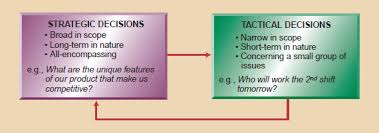The Importance of Using a Decision Model
Decision-making is a crucial aspect of our daily lives, whether it’s choosing what to have for breakfast or making significant life-changing choices. One effective way to approach decision-making is by using a decision model.
A decision model is a structured framework that helps individuals or organizations make informed and rational decisions. It provides a systematic approach to analyzing options, evaluating risks, and selecting the best course of action based on predefined criteria.
There are various types of decision models, such as the rational decision-making model, the intuitive decision-making model, and the normative decision-making model. Each model offers a different perspective on how decisions should be made.
One of the key benefits of using a decision model is that it helps reduce cognitive biases and emotional influences that can cloud judgment. By following a structured process, individuals can weigh the pros and cons of each option objectively and arrive at a well-thought-out decision.
Furthermore, decision models promote consistency in decision-making across different scenarios. They provide a clear set of steps to follow, ensuring that decisions are made in a logical and coherent manner.
In complex situations where multiple variables need to be considered, a decision model can help break down the problem into manageable parts and facilitate better analysis. This can lead to more effective decisions that align with long-term goals and objectives.
In conclusion, incorporating a decision model into your decision-making process can enhance your ability to make sound choices with confidence. Whether you are faced with personal dilemmas or strategic business decisions, having a structured framework in place can improve the quality of your decisions and ultimately lead to better outcomes.
5 Essential Tips for Crafting an Effective Decision Model
- Clearly define the decision to be made
- Identify all relevant factors and variables
- Consider various possible outcomes or scenarios
- Use appropriate decision-making tools or techniques
- Evaluate the impact and risks associated with each option
Clearly define the decision to be made
When utilizing a decision model, it is essential to start by clearly defining the decision that needs to be made. By articulating the specific problem or choice at hand, individuals can focus their efforts on gathering relevant information and evaluating potential solutions within the framework of the decision model. A well-defined decision ensures that all stakeholders are aligned on the objectives and criteria for making an informed choice, leading to a more effective and efficient decision-making process overall.
Identify all relevant factors and variables
When utilizing a decision model, it is essential to identify all relevant factors and variables that may impact the decision-making process. By thoroughly considering all aspects of the situation, including potential risks, opportunities, constraints, and stakeholders involved, individuals can make more informed and comprehensive decisions. Failing to account for important factors may lead to overlooking critical information that could significantly influence the outcome. Therefore, taking the time to identify and analyze all relevant variables is crucial for ensuring a well-rounded and effective decision-making process.
Consider various possible outcomes or scenarios
When utilizing a decision model, it is essential to consider various possible outcomes or scenarios. By exploring different potential results of each decision, individuals can better evaluate the risks and benefits associated with each option. This approach allows for a more comprehensive analysis and helps in making informed decisions that take into account a range of possibilities, ultimately leading to more effective and successful outcomes.
Use appropriate decision-making tools or techniques
When utilizing a decision model, it is essential to leverage appropriate decision-making tools or techniques to enhance the effectiveness of the process. By selecting the right tools, such as decision matrices, SWOT analysis, or cost-benefit analysis, individuals can systematically evaluate options and make well-informed decisions based on relevant criteria. These tools provide a structured approach to analyzing complex information and can help mitigate biases or uncertainties that may arise during the decision-making process. Choosing the appropriate decision-making tools or techniques ensures that decisions are made with clarity and precision, leading to more successful outcomes in various situations.
Evaluate the impact and risks associated with each option
When utilizing a decision model, it is essential to thoroughly evaluate the impact and risks associated with each available option. By carefully assessing the potential consequences of each choice, individuals can make more informed decisions that take into account both short-term benefits and long-term implications. Understanding the risks involved allows for a more comprehensive analysis of the potential outcomes, enabling individuals to select the option that best aligns with their goals and priorities.




